Current situation of industrial wastewater in our country
Emissions profile
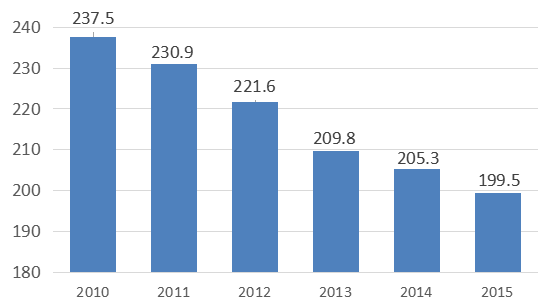
Discharge of industrial wastewater in our country in recent years (unit: 100 million tons)
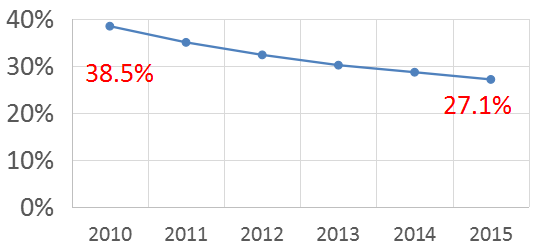
Changes in the proportion of industrial wastewater discharge in our country in recent years
It can be seen that in recent years, the total discharge of industrial wastewater in our country has shown a downward trend year by year. In 2010, the discharge of industrial wastewater was 23.75 billion tons; in 2015, it was reduced to 19.95 billion tons.
Wastewater discharge of key industries in our country in 2015
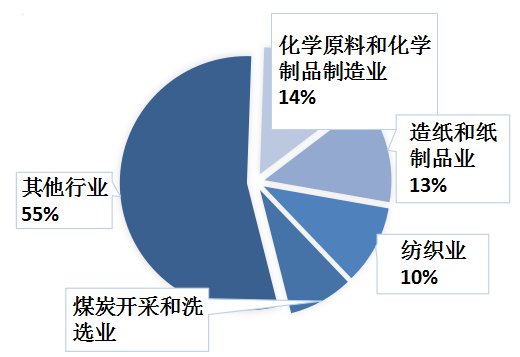
In 2015, in our country's industrial wastewater emissions, the chemical, paper, textile and coal industries accounted for almost half of the total wastewater emissions, making it the largest industrial wastewater emitter.
3. Industrial wastewater treatment in our country in recent years
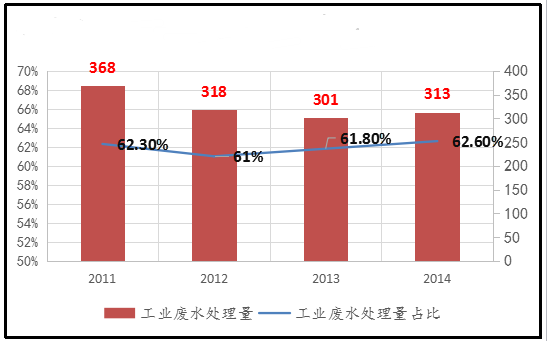
In recent years, our country's industrial wastewater treatment capacity has reached 300-37 billion tons, with a treatment rate of about 62%. Although significant progress has been made, there is still much room for improvement
02
The following are the introduction and analysis of 10 latest industrial wastewater treatment technologies
Membrane Technology
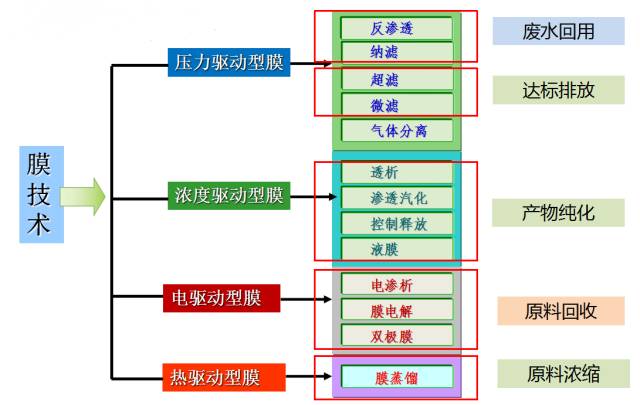
Membrane separation methods are commonly used in microfiltration, nanofiltration, ultrafiltration and reverse osmosis technologies. Since membrane technology does not introduce other impurities during the treatment process, it can realize the separation of macromolecules and small molecules, so it is often used for the recovery of various macromolecular raw materials.
Such as the use of ultrafiltration technology to recover polyvinyl alcohol slurry from printing and dyeing wastewater. At present, the main difficulties limiting the application and promotion of membrane technology are the high cost of membrane, short life, easy to be polluted and blocked. With the development of membrane production technology, membrane technology will be more and more used in the field of wastewater treatment.
Iron-carbon microelectrolysis treatment technology

The iron-carbon micro-electrolysis method is a good process for treating wastewater using the principle of Fe/C primary battery reaction, also known as internal electrolysis method, iron filings filtration method, etc. The iron-carbon micro-electrolysis method is a comprehensive effect of electrochemical redox, electrochemical electric pair on the electric enrichment of flocs, as well as the agglomeration of electrochemical reaction products, the adsorption of new flocs and bed filtration. The main effects are oxidation reduction and electric attachment and agglomeration.
Iron filings immersed in wastewater containing a large amount of electrolyte, the formation of countless tiny primary battery, after adding coke in the iron filings, iron filings and coke particles in contact to further form a large primary battery, so that iron filings by micro-primary battery corrosion on the basis of, but also by the corrosion of large primary batteries, thereby speeding up the electrochemical reaction.
This method has many advantages such as wide application range, good treatment effect, long service life, low cost and convenient operation and maintenance. It also uses waste iron filings as raw materials, and does not require power resources. It has the significance of "treating waste with waste". At present, iron-carbon microelectrolysis technology has been widely used in the treatment of wastewater such as printing and dyeing, pesticides/pharmaceuticals, heavy metals, petrochemical and oil separation, as well as landfill leachate, and has achieved good results.
Fenton and Fenton-like Oxidation
The typical Fenton reagent is catalyzed by Fe2 + to decompose H2O2 to produce OH, which initiates the oxidative degradation of organic matter. Due to the long time required for wastewater treatment by the Fenton method, the amount of reagents used is large, and excess Fe2 + will increase the COD in the treated wastewater and cause secondary pollution.
In recent years, ultraviolet light, visible light, etc. have been introduced into the Fenton system, and other transition metals have been studied to replace Fe2 +. These methods can significantly enhance the oxidative degradation ability of Fenton reagents to organic matter, reduce the amount of Fenton reagents, and reduce the treatment cost, collectively referred to as Fenton-like reactions.
The Fenton method has mild reaction conditions, simple equipment, and a wide range of applications. It can be used as a separate treatment technology or in combination with other methods, such as coagulation precipitation, activated carbon, and biological treatment, as a pretreatment or advanced treatment method for refractory organic wastewater.
ozone oxidation
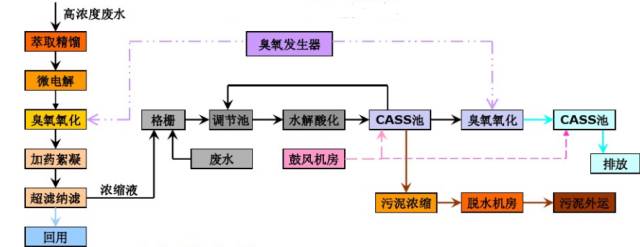
Ozone process flow of a pharmaceutical wastewater project
Ozone is a strong oxidizing agent that reacts quickly with reduced pollutants, is easy to use, and does not produce secondary pollution. It can be used for disinfection, decolorization, deodorization, removal of organic matter and reduction of COD of wastewater. The ozone oxidation method alone is expensive, expensive to treat, and its oxidation reaction is selective, and the oxidation effect of some halogenated hydrocarbons and pesticides is relatively poor.
Therefore, in recent years, relevant combination technologies aimed at improving the efficiency of ozone oxidation have been developed, among which UV/O3, H2O2/O3, UV/H2O2/O3 and other combinations can not only improve the oxidation rate and efficiency, but also oxidize organic matter that is difficult to oxidize and degrade when ozone acts alone. Due to the low solubility of ozone in water, the low efficiency of ozone production and the high energy consumption, increasing the solubility of ozone in water, improving the utilization rate of ozone, and developing high-efficiency and low-energy ozone generators have become the main directions of research.
Magnetic separation technology
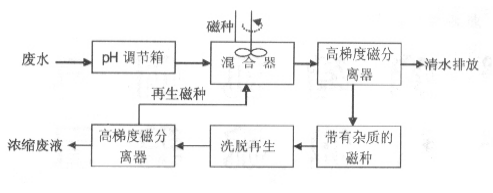
Plasma water treatment technology
Low temperature plasma water treatment technology, including high pressure pulse discharge plasma water treatment technology and glow discharge plasma water treatment technology, is the use of discharge to directly generate plasma in aqueous solution, or to introduce active particles in gas discharge plasma into water, which can completely oxidize and decompose pollutants in water.
Electrochemical (catalytic) oxidation technology
Electrochemical (catalytic) oxidation technology directly degrades organic matter through anodic reaction, or generates hydroxyl radical (OH), ozone and other oxidants through anodic reaction to degrade organic matter.
Electrochemical (catalytic) oxidation includes two-dimensional and three-dimensional electrode systems. It is currently highly regarded due to the micro-electric field electrolysis of three-dimensional electrode systems. Three-dimensional electrodes are filled with granular or other debris-like working electrode materials between the electrodes of a traditional two-dimensional electrolyzer, and the surface of the filled material is charged to become a third pole, and electrochemical reactions can occur on the surface of the working electrode material.
Compared with the two-dimensional flat electrode, the three-dimensional electrode has a large specific surface, which can increase the surface-to-body ratio of the electrolyzer, provide a larger current intensity with a lower current density, have a small particle spacing, a high mass transfer speed, and a high spatiotemporal conversion efficiency. Therefore, the current efficiency is high and the treatment effect is good. The three-dimensional electrode can be used to treat domestic sewage, pesticides, dyes, pharmaceuticals, phenol-containing wastewater and other refractory organic wastewater, metal ions, landfill leachate, etc.
Radiation Technology
Since the 1970s, with the development of large cobalt sources and electron accelerator technology, the problem of radiation sources in the application of radiation technology has been gradually improved. The research on the use of radiation technology to treat pollutants in wastewater has attracted attention and attention from all countries.
Compared with traditional chemical oxidation, the use of radiation technology to treat pollutants does not require the addition of chemical reagents or only a small amount of chemical reagents, does not produce secondary pollution, and has the advantages of high degradation efficiency, fast reaction speed, and complete degradation of pollutants. Moreover, when ionizing radiation is used in combination with catalytic oxidation methods such as oxygen and ozone, it will produce a "synergy effect". Therefore, radiation technology to treat pollutants is a clean and sustainable technology, and is listed by the International Atomic Energy Agency as the main research direction for the peaceful use of atomic energy in the 21st century.
Photochemical Catalytic Oxidation Technology
Photochemical catalytic oxidation technology is developed on the basis of photochemical oxidation. Compared with photochemical method, it has stronger oxidation ability and can degrade organic pollutants more thoroughly. Photochemical catalytic oxidation is photochemical degradation under the condition of catalyst, and oxidants produce free radicals with strong oxidation ability under the radiation of light.
The catalysts include TiO2, ZnO, WO3, CdS, ZnS, SnO2 and Fe3O4.
Divided into homogeneous and heterogeneous two types, homogeneous photocatalytic degradation is to use Fe2 + or Fe3 + and H2O2 as a medium to generate hydroxyl radicals through light-assisted-Fenton reaction to degrade pollutants; heterogeneous catalytic degradation is to put a certain amount of photosensitive semiconductor materials, such as TiO2, ZnO, etc. in the pollution system, and combine light radiation to excite the photosensitive semiconductor under the irradiation of light to generate electron-hole pairs. Dissolved oxygen, water molecules, etc. adsorbed on the semiconductor interact with electron-hole to produce free radicals with strong oxidation ability such as OH.
TiO2 photocatalytic oxidation technology has obvious advantages in oxidative degradation of organic pollutants in water, especially refractory organic pollutants.
Supercritical water oxidation (SCWO) technology
SCWO is a homogeneous oxidation decomposition of organic matter using supercritical water as a medium. Organic pollutants can be decomposed into inorganic small molecules such as CO2 and H2O in a short time, while sulfur, phosphorus and nitrogen atoms are converted into sulfate, phosphate, nitrate and nitrite ions or nitrogen respectively. The United States lists the SCWO method as the most promising waste treatment technology in the field of energy and environment.



